Picture this: you're getting ready to host the perfect backyard BBQ, you go to uncover your gorgeous outdoor furniture, and BAM! Your beautiful cushions look like they've been invaded by an alien life form. That fuzzy, discolored mess isn't just gross – it's mold, and it's basically throwing a party on your fabric while you weren't looking. But before you panic and toss everything in the trash, take a deep breath. We've got your back with some seriously effective mold-busting strategies that'll have your cushions looking fresh again.
While this guide provides powerful methods for removing stubborn mold, understanding comprehensive cushion care is key to long-term pristine outdoor spaces. For an all-encompassing resource that tackles every cleaning challenge, from everyday dirt and stains to advanced mold remediation and general maintenance tips using various solutions like vinegar, explore our definitive handbook: The Complete Cushion Cleaning Handbook: From Vinegar to Mold Removal.
The Real Talk About Outdoor Cushion Mold
Let's be honest – mold on outdoor furniture fabric is like that one friend who overstays their welcome. It shows up uninvited, makes itself comfortable, and refuses to leave without a fight. Unlike mildew (its annoying cousin), mold digs deeper into fabric fibers and can actually cause some serious damage if you let it stick around too long.
Mold vs. Mildew: Know Your Enemy
Mold
- Fuzzy or slimy texture
- Green, black, or blue colors
- Penetrates deep into fibers
- Musty, earthy smell
- Harder to remove
Mildew
- Flat, powdery appearance
- White or gray colors
- Surface-level growth
- Lighter odor
- Easier to clean
Safety First (Because Nobody Wants to Become a Mold Monster)
Before we dive into the fun stuff, let's talk safety. Mold spores are no joke – they can trigger allergies, respiratory issues, and generally make you feel like garbage. So gear up like you're about to perform surgery on your cushions.
Respiratory Protection
N95 mask minimum, better yet go for a P100 respirator
Hand Protection
Nitrile gloves that won't tear when you're scrubbing
Eye Protection
Safety glasses to keep spores out of your eyes
Ventilation
Work outdoors or in well-ventilated areas only
Damage Assessment (Time to Face the Music)
Not all mold situations are created equal. Some cushions just need a good talking-to, while others might need intensive care. Here's how to figure out what you're dealing with:
Light Infestation
Easy FixWhat you'll see: Small patches, mostly surface-level, recent growth
Game plan: Basic cleaning solutions, gentle scrubbing
Success rate: 95% with proper treatment
Moderate Damage
Moderate ChallengeWhat you'll see: Larger areas, some fiber penetration, noticeable odor
Game plan: Multi-step treatment, stronger solutions
Success rate: 75% with intensive cleaning
Severe Contamination
Challenge ModeWhat you'll see: Extensive coverage, deep penetration, structural damage
Game plan: Professional treatment or replacement consideration
Success rate: 30-50% depending on material

Your Anti-Mold Arsenal (Time to Shop Your Cleaning Cabinet)
Good news! Most of what you need to wage war against mold is probably already hanging out in your house. Let's organize your weapons by power level:
White Vinegar
The MVP of natural cleaning. Kills 82% of mold species and won't destroy your fabric.
Baking Soda
Absorbs moisture and neutralizes odors. Perfect for post-treatment cleanup.
Dish Soap
Breaks down oils and helps other cleaners penetrate better.
Lemon Juice
Natural bleaching action plus antimicrobial properties.
Hydrogen Peroxide
Oxygen bleach that's safer than chlorine but still packs a punch.
Borax
Old-school mold killer that doesn't mess around.
Enzyme Cleaners
Break down mold at the molecular level. Science is cool.
Tea Tree Oil
Natural antifungal that smells way better than chemicals.
Chlorine Bleach
The nuclear option. Kills everything but use with extreme caution.
Oxygen Bleach
Gentler than chlorine but still powerful enough for tough jobs.
Commercial Mold Removers
Specifically formulated for tough mold situations.
Ammonia
Effective but toxic. Only for emergency situations.
Battle Plans for Every Fabric Type
Not all fabrics are created equal, and what works like magic on one material might completely destroy another. Here's your fabric-specific game plan:
Canvas and Duck Fabric
These tough fabrics can handle aggressive treatment. Start with a vinegar solution (1:1 ratio with water), let it sit for 30 minutes, then scrub with a stiff brush. For stubborn mold, escalate to hydrogen peroxide or even diluted bleach.
Polyester and Synthetic Blends
These modern fabrics are mold-resistant but not mold-proof. Enzyme cleaners work particularly well here. Mix 1 cup hydrogen peroxide with 2 cups water, spray generously, and let chemistry do its thing for 20 minutes before scrubbing.
Natural Fibers (Cotton, Linen)
Handle with care! These fibers are mold's favorite snack. Start gentle with vinegar and work up slowly. Never use chlorine bleach on natural fibers – it'll eat them alive. Tea tree oil solution (2 tsp per cup of water) works wonders.
Olefin and Acrylic
These high-performance outdoor fabrics are tough cookies. They can handle most cleaning solutions without flinching. A borax paste (borax + water) works excellently – spread it on, let it sit for an hour, then scrub and rinse.
Upgrade Your Outdoor Game
Tired of fighting the same mold battles every season? Our premium square chair cushions are engineered with advanced mold-resistant materials that laugh in the face of moisture and humidity. These aren't your grandma's outdoor cushions – they're built for the modern outdoor lifestyle.

The Ultimate Mold Removal Protocol
Alright, enough theory – let's get down and dirty with the actual process. This method works for most fabric types and mold levels:
Preparation Phase
Gear up with protective equipment. Remove cushions to a well-ventilated outdoor area. Vacuum loose mold with a HEPA filter vacuum (dispose of the bag immediately).
Initial Treatment
Mix your chosen solution (start with vinegar for most fabrics). Spray generously on affected areas. Don't be stingy – mold laughs at half-hearted attempts.
Penetration Time
Let the solution sit for 15-30 minutes depending on severity. This isn't the time to be impatient – good things come to those who wait.
Agitation Action
Scrub with a stiff brush in circular motions. Work from outside edges toward the center to avoid spreading mold. Put some muscle into it!
Rinse Cycle
Thoroughly rinse with clean water. We're talking garden hose, pressure washer if you have it, or multiple buckets of water. No cleaning residue should remain.
Drying Phase
This is CRITICAL. Air dry completely in direct sunlight if possible. UV rays provide bonus mold-killing power. Expect 24-48 hours for complete drying.

Special Ops for Stubborn Situations
Sometimes standard protocol isn't enough. Here are advanced tactics for when mold is being particularly stubborn:
🎯 Targeted Strike Method
For isolated tough spots, make a paste with baking soda and hydrogen peroxide. Apply thick, cover with plastic wrap, and let it work for 2 hours. The extended contact time helps break down embedded mold.
🔥 Heat Treatment
If your fabric can handle it, hot water (120°F+) can help. Mold cells start dying at high temperatures. Be careful with synthetic fabrics that might melt or shrink.
❄️ Freeze and Destroy
For small cushions, 48 hours in a deep freezer kills mold spores. Thaw completely before cleaning – dead mold is easier to remove than live mold.
⚡ Steam Power
Steam cleaners at 200°F+ can penetrate deep into fibers. Follow up with antimicrobial treatment to prevent immediate regrowth.
Know Your Cushion Materials
Understanding what your cushions are made of helps you choose the right battle strategy. Here's a quick reference guide:
| Material Type | Mold Resistance | Cleaning Intensity | Best Treatments |
|---|---|---|---|
| Solution-Dyed Acrylic | High | Aggressive OK | Bleach, strong detergents |
| Polyester | Medium-High | Moderate | Hydrogen peroxide, enzymes |
| Canvas/Cotton | Low | Gentle to Moderate | Vinegar, natural treatments |
| Vinyl/PVC | Very High | Non-porous surface | Any cleaning method |
| Olefin | Very High | Aggressive OK | Bleach, commercial cleaners |
Prevention Tactics (Because Prevention Beats Cure Every Time)
The best mold removal strategy? Not getting mold in the first place. Here's your prevention playbook:
Daily Defense
- Quick visual checks during regular use
- Flip cushions after rain or pool parties
- Wipe down with dry cloth if moisture detected
Weekly Warfare
- Deep visual inspection of all cushions
- Light cleaning with antimicrobial spray
- Check drainage around seating areas
Monthly Missions
- Complete cleaning with mild soap solution
- Inspect and clean storage areas
- Apply fabric protectant if needed
Seasonal Strategy
- Deep clean before and after storage
- Professional treatment for expensive pieces
- Replace worn or damaged cushions
Custom Solutions for Custom Problems
Every outdoor space is unique, and sometimes you need cushions that are built specifically for your environment. Our U-shape chair cushions and custom outdoor cushions can be engineered with enhanced mold resistance for challenging climates.

When to Throw in the Towel
Sometimes, despite our best efforts, cushions are beyond saving. Here's when it's time to admit defeat and start fresh:
🚨 Immediate Replacement Needed
- Fabric is disintegrating or falling apart
- Mold has penetrated foam core extensively
- Strong odors remain after multiple cleaning attempts
- Family members develop health symptoms
⚠️ Consider Replacement
- Cleaning costs exceed replacement costs
- Mold returns quickly after treatment
- Cushions are very old or low-quality
- Structural damage from repeated cleaning
Being Earth-Friendly While Fighting Mold
You don't have to nuke your cushions with harsh chemicals to win the mold war. Here are some eco-conscious strategies:
🌱 Natural Antimicrobials
Tea tree oil, grapefruit seed extract, and oregano oil are natural mold fighters. They're gentler on the environment and your lungs.
♻️ Reusable Solutions
Invest in quality spray bottles and cleaning tools that last. Skip single-use wipes and paper towels when possible.
🌊 Water Conservation
Use targeted application instead of soaking. Collect rinse water for garden irrigation (after it's been treated).
☀️ Solar Power
Let the sun do the heavy lifting. UV rays are nature's disinfectant and they're completely free!
Troubleshooting Common Fails
Things don't always go according to plan. Here are solutions for when your mold removal mission hits a snag:
Problem: Mold Keeps Coming Back
Solution:
You're not addressing the moisture source. Check drainage, improve ventilation, or consider moving cushions to a drier location.
Problem: Fabric Bleached or Damaged
Solution:
Always test cleaning solutions on hidden areas first. Some fabrics need specialized treatments or professional care.
Problem: Persistent Odors
Solution:
Odors usually mean mold is still present, possibly in foam cores. Try enzyme cleaners or consider foam replacement.
Problem: Cleaning Solutions Not Working
Solution:
You might be dealing with a different organism or heavy contamination. Escalate to stronger treatments or professional help.
Your Mold-Free Future Starts Now
Fighting mold on outdoor cushion fabric doesn't have to be a losing battle. With the right knowledge, tools, and techniques, you can reclaim your outdoor space and keep it looking fresh all season long. Remember, the key is early detection and quick action – mold is much easier to deal with when it's just getting started than when it's established a full colony.
The most important thing? Don't let perfect be the enemy of good. Even if your cushions aren't pristine after treatment, clean and safe is better than moldy and gross. And if you're ready to upgrade to cushions that won't give you these headaches in the first place, well... you know where to find us.
Ready to Win the War Against Mold?
Explore our collection of premium outdoor deep seat cushions and bar stool cushions designed with advanced mold-resistant technology. Because life's too short to spend your weekends scrubbing fungus when you could be enjoying that perfect outdoor moment.


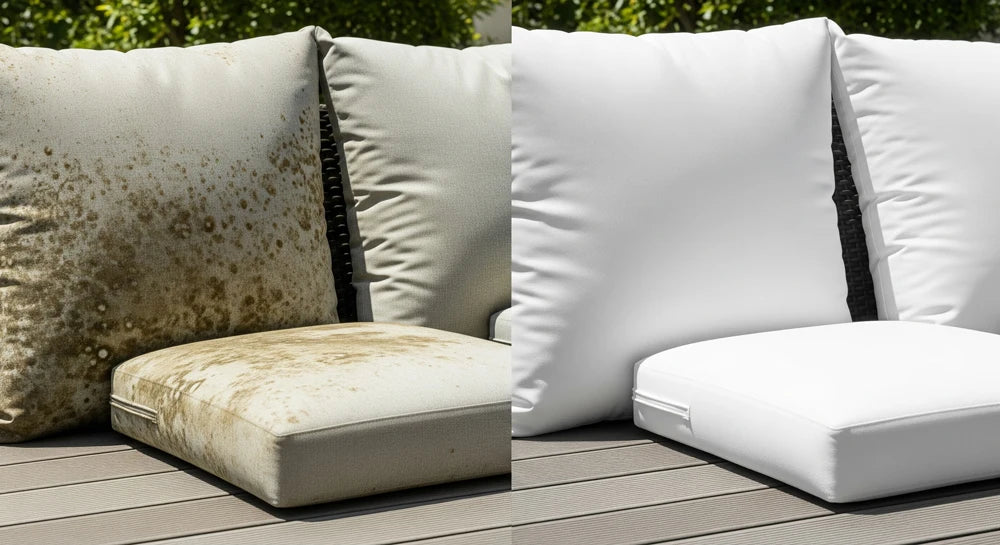

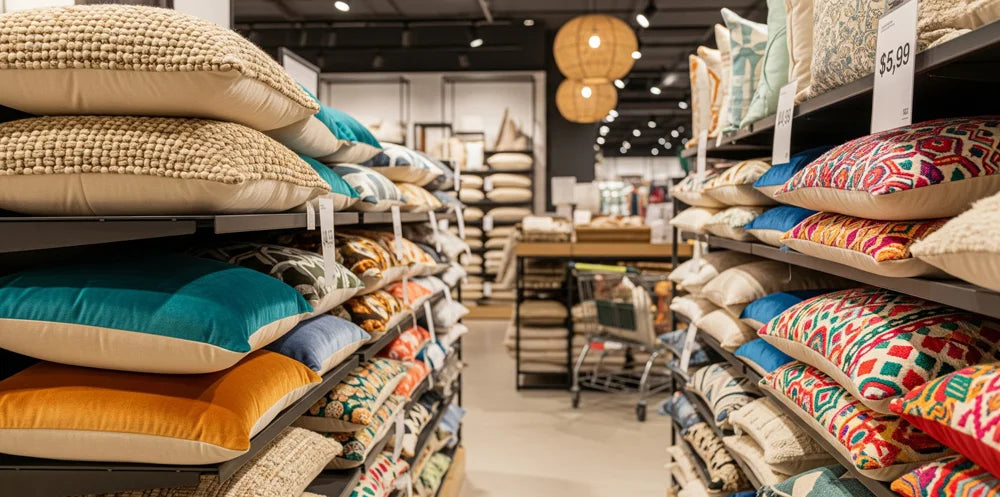
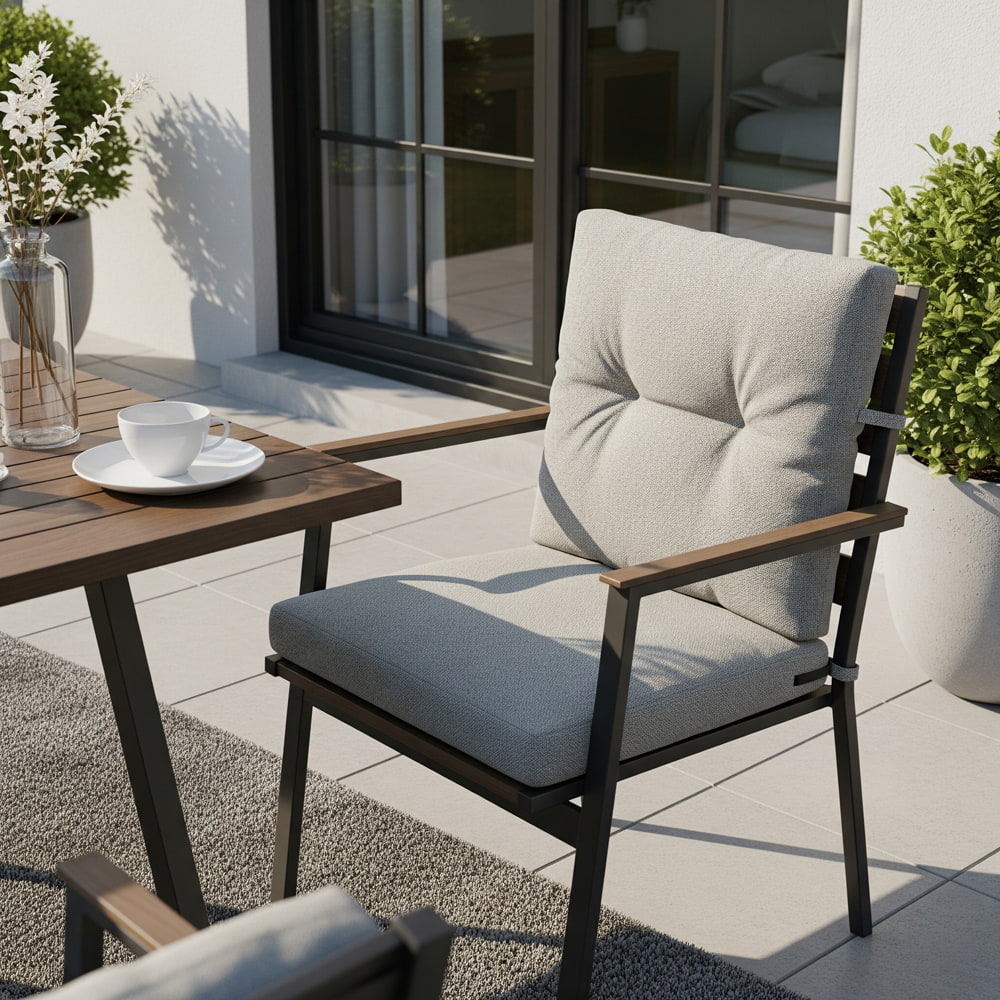
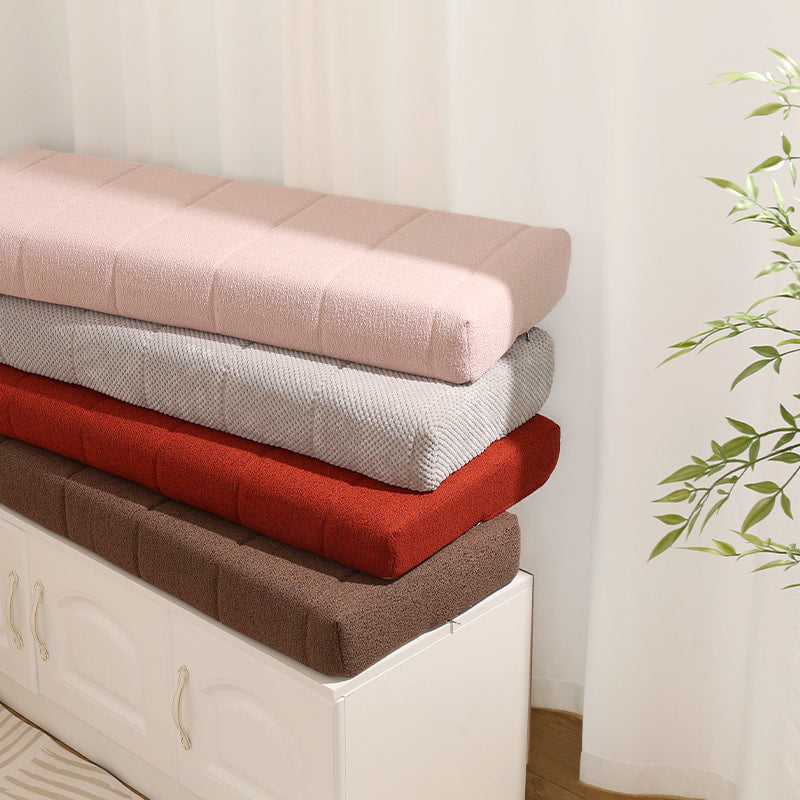

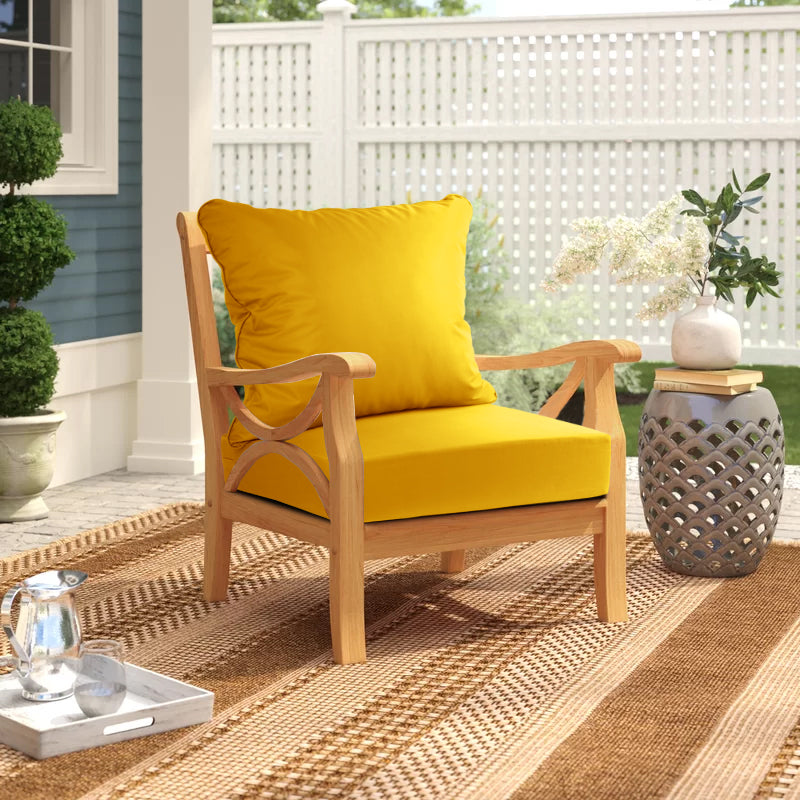
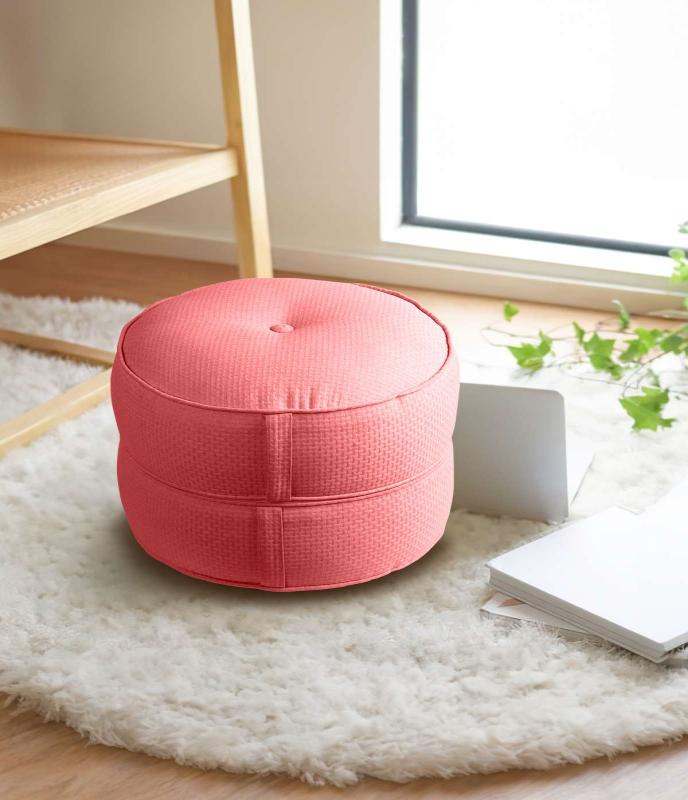
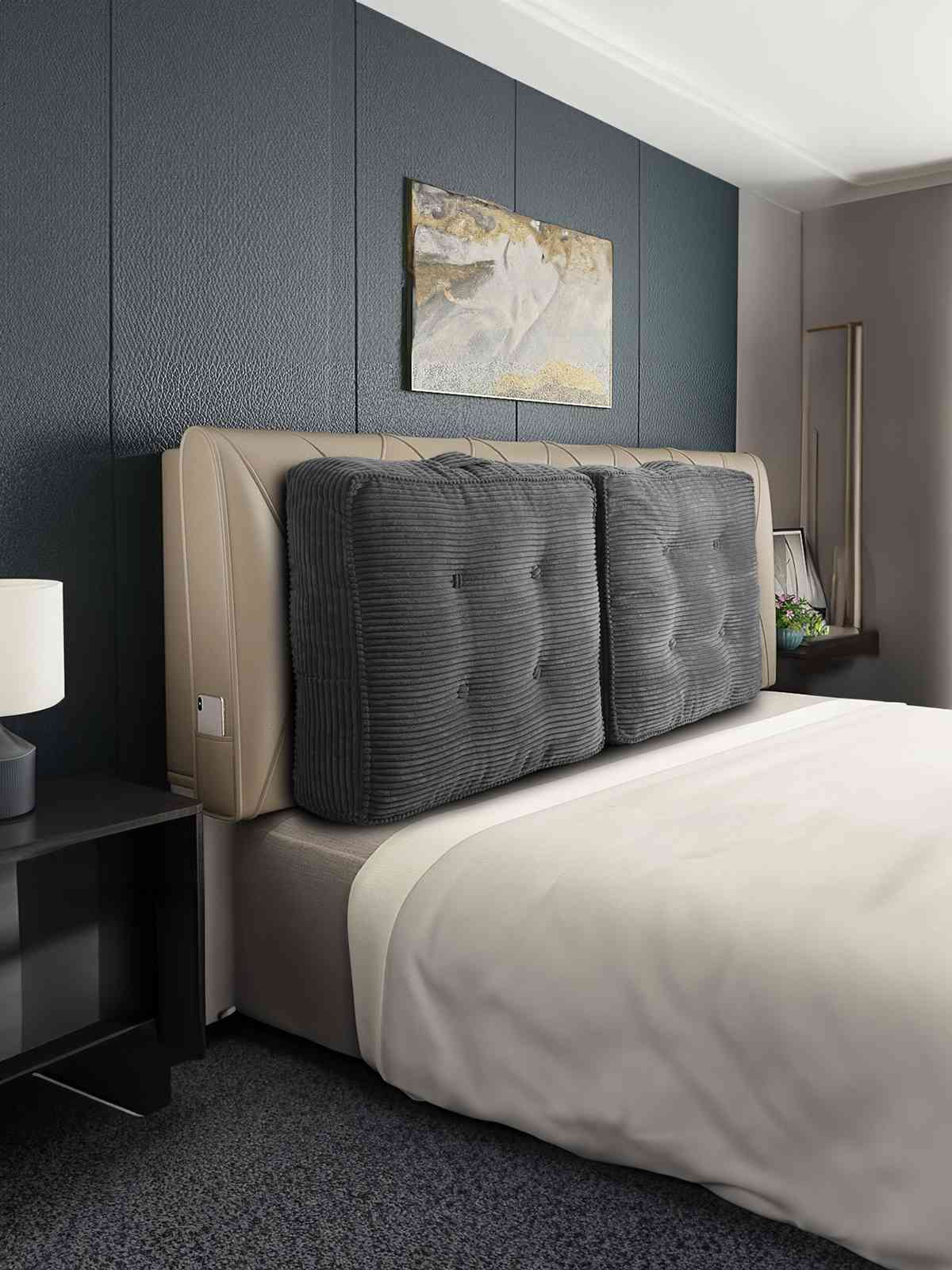
Leave a comment
All comments are moderated before being published.
This site is protected by hCaptcha and the hCaptcha Privacy Policy and Terms of Service apply.